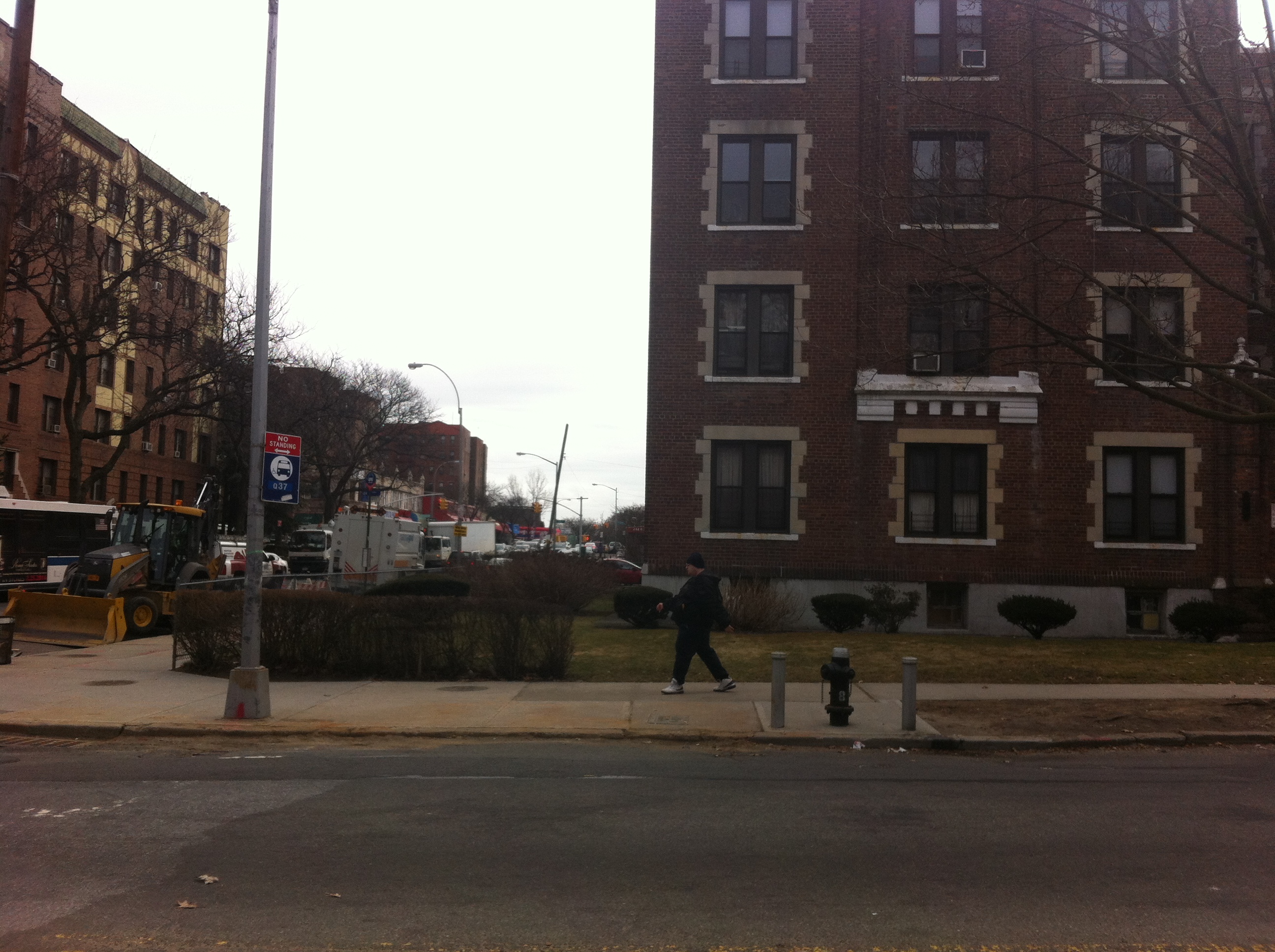With the launch of BusTime to Brooklyn and Queens earlier this month, the MTA completed its roll-out of BusTime, a smartphone and web app that allows bus riders to access real time bus information. This is good news for anyone who’s had the frustrating experience of waiting for a late bus. Minutes can feel like hours when you don’t know how long you’ll be waiting for the next bus — especially in inclement weather.
Advocates continue to call for other improvements like bus countdown clocks (as seen on some subway platforms), which would benefit all riders, not just those who use smartphones. And although technological advances like BusTime are welcome new amenities, many bus stops — particularly those located in the outer boroughs — still lack even the most basic infrastructure. Shelters, benches, signage with maps, route destinations and schedules, and curb-to-sidewalk accessibility are factors that can affect the comfort, safety and convenience of bus riders. When these features are missing, it impacts all riders, but particularly those who rely on buses the most: seniors, disabled riders and commuters who live in areas where the closest subway stop may be a bus ride away.

Ideally, every transit stop would be made accessible for all riders, but New York City still has a ways to go before that becomes a reality. For example, this bus stop (Photo 1) in Kew Gardens, Queens poses a challenge for wheelchair-bound riders, or anyone who requires a curb cut to access the bus stop.
Because the sidewalk along Park Lane South is elevated much higher from the street due to the neighborhood’s varying topography, a platform has been constructed for the Ozone Park-bound Q37 bus stop located on Park Lane South and Abingdon Road, along with a staircase to access the sidewalk. But because there are no curb cuts leading to the bus stop, any passenger who uses a wheelchair, or even someone pushing a stroller, would have to use a roundabout route to access this bus stop. In a neighborhood where nearly 10 percent of the population is 65 or older, safe, convenient access to transit should be a priority.

Farther down the same road, at the intersection of Park Lane South and Metropolitan Avenue, is a bare bones bus stop (Photo 2) served by the Q37 bus. But without a timetable, map, or any other information, a first-time rider would have a hard time navigating the neighborhood.
So who is to blame for the City’s lackluster bus stops? The MTA’s Capital Program funds improvement and maintenance for the system’s bus fleet, depots and program administration, but the New York City Department of Transportation is responsible for maintaining city streets, sidewalks, bus lanes and bus shelters. Both entities must work together to ensure that the system’s nearly 15,000 bus stops are accessible and have adequate infrastructure for the City’s transit riders.

How are these two stories related? It’s great the MTA has finished rolling out real-time info for it’s bus system, and yes, NYCDOT needs to improve sidewalks and bus stops.
MTA does occasionally do something right, and on this occasion they did an absolutely brilliant job with real-time bus info and deserve a round of applause. And no, it’s not just for people with smartphones, anyone with a cell phone can get information via text messages. This is a huge benefit to everyone, including, the elderly and handicapped, as they can now wait someplace warm and inside for their bus to arrive, and then get to the bus stop a few minutes ahead of time.
Building and maintaining countdown clocks at every bus stop in the city would wipe out funding for any kind of pedestrian/bus stop improvement, and wouldn’t be half as useful as having the information available via mobile phone.
This is similar to the situation with CT Fastrak and regular bus service in Hartford, CT. All the thousands of average Hartford area bus riders deserve major enhancements in bus shelters, bus time information, more routes and faster times. Completing and operating CT Fastrak is just a start in fulfilling the need for improved bus service.
[…] rode only subways or a combination of subways and buses in the same age range. One more reason for accessible bus stops and curb ramps in neighborhoods with high bus […]